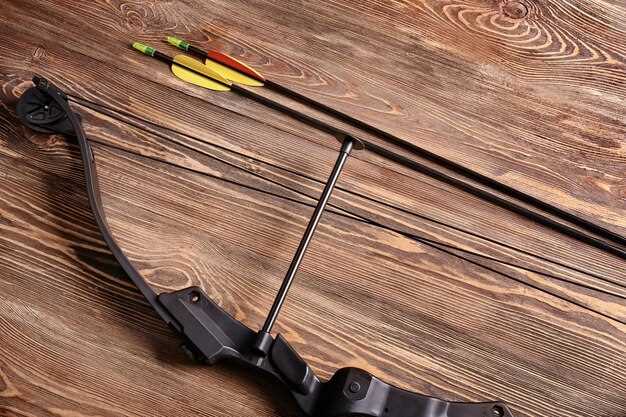
How to choose a hunting crossbow for your needs

Selecting the ideal hunting crossbow requires careful consideration of various features that cater to your specific requirements and hunting environment. With a plethora of options available on the market, understanding these attributes is vital to ensure an enjoyable and successful hunting experience.
One of the primary aspects to evaluate when choosing a crossbow is its draw weight, which greatly influences the power and speed of the bolt. A higher draw weight generally results in greater velocity, but it may not be suitable for all hunters, especially beginners. Therefore, finding the right balance between power and ease of use is crucial.
Another important feature to consider is the length and width of the crossbow. Compact models are ideal for maneuverability in dense environments, whereas larger models may offer more stability and accuracy over longer distances. Additionally, consider the type of scope and sighting system that complements your hunting style; the right optics can make a significant difference in your aim and overall success.
Understanding Crossbow Specifications and Terminology

When choosing the right hunting crossbow, it’s crucial to comprehend the specifications and terminology used in the industry. This guide will highlight key features that can influence your decision-making process.
Draw Weight: This refers to the amount of force required to draw the crossbow string. It typically ranges from 150 to over 200 pounds. Higher draw weights result in faster arrow speeds, which can be advantageous for hunting.
Kinetic Energy: Kinetic energy is essential for determining the power of your crossbow. It is measured in foot-pounds (ft-lbs) and indicates how much energy is delivered to the arrow upon release. A higher kinetic energy rating often leads to more effective performance against larger game.
Speed: Crossbow speed is measured in feet per second (fps). The speed of the arrow affects trajectory and accuracy. Most hunting crossbows offer speeds between 300 to 500 fps, with faster models providing flatter trajectories and less drop over distance.
Power Stroke: This measurement indicates the distance the string travels from the fully drawn position to the rest position. A longer power stroke typically results in increased arrow speed and better performance.
Weight: The total weight of the crossbow impacts stability and maneuverability. Heavier models are generally more stable when aiming, while lighter models offer better handling in the field.
Accessories: Various features, such as scopes, quivers, and dampening systems, can enhance your crossbow experience. Understanding the compatibility and advantages of these accessories can significantly improve performance and efficiency.
In summary, familiarizing yourself with these specifications and terminology can help you make an informed decision when selecting a hunting crossbow suited to your needs. Each feature plays a role in the overall effectiveness of the crossbow in various hunting scenarios.
Evaluating Weight, Speed, and Draw Length for Your Hunting Style

When selecting a hunting crossbow, it is crucial to evaluate key features such as weight, speed, and draw length, as these factors directly impact your performance in the field. This guide will help you understand how each element affects your hunting experience.
Weight plays a significant role in maneuverability and ease of use. A lightweight crossbow can enhance your mobility, making it easier to carry during long hunts. However, be cautious; extremely lightweight models may compromise stability and absorb less recoil, which can affect accuracy. Consider your hunting environment when choosing the weight–if you traverse rugged terrains, a slightly heavier model may offer better balance and control.
Speed, typically measured in feet per second (FPS), is essential for determining how quickly your bolt travels towards the target. Higher speeds generally result in a flatter trajectory, allowing for more precise shots at various distances. Nonetheless, excessive speed can lead to increased noise, potentially spooking game. A balanced speed that suits your hunting style and target distance is vital; evaluate the FPS rating of the crossbow to ensure it meets your specific needs.
Draw length is another critical feature that affects both power and comfort. The draw length determines how far you need to pull the string back, impacting the energy stored in the bow and thus the bolt’s velocity. Choosing an appropriate draw length is essential for optimizing your shooting posture and ensuring a smooth draw cycle. If you have a longer draw length, look for crossbows specifically designed to accommodate it, as this will help you achieve maximum performance without discomfort.
Ultimately, finding the right balance between weight, speed, and draw length will enhance your hunting experience. Test various models to see how they fit your unique style while keeping these features in mind. A well-selected crossbow can significantly increase your chances of a successful hunt.
Comparing Price Points: Budget vs. Premium Crossbows
When selecting a crossbow, understanding the differences between budget and premium models is essential. Budget crossbows are generally more accessible, with prices often ranging from $100 to $400. These models typically offer basic features, making them suitable for beginner hunters or those who occasionally hunt. While they may lack advanced technology, they still provide adequate performance for small game and target shooting.
On the other hand, premium crossbows can cost anywhere from $600 to over $1,500. These crossbows incorporate high-quality materials, advanced features, and superior mechanics that enhance shooting accuracy, speed, and overall user experience. They often come equipped with adjustable stocks, integrated silencers, and sophisticated scope systems, making them ideal for serious hunters who demand performance and reliability in the field.
While budget crossbows provide good value for entry-level users, premium crossbows justify their price through durability and ongoing technological advancements. Many hunters find that investing in a premium model translates to better performance, accuracy, and longevity, ultimately leading to more successful hunts.
Ultimately, the choice between budget and premium crossbows depends on your specific needs, level of experience, and frequency of use. Hunt-specific requirements, alongside your budget, should guide this decision, helping you find a crossbow that aligns with your hunting aspirations.




